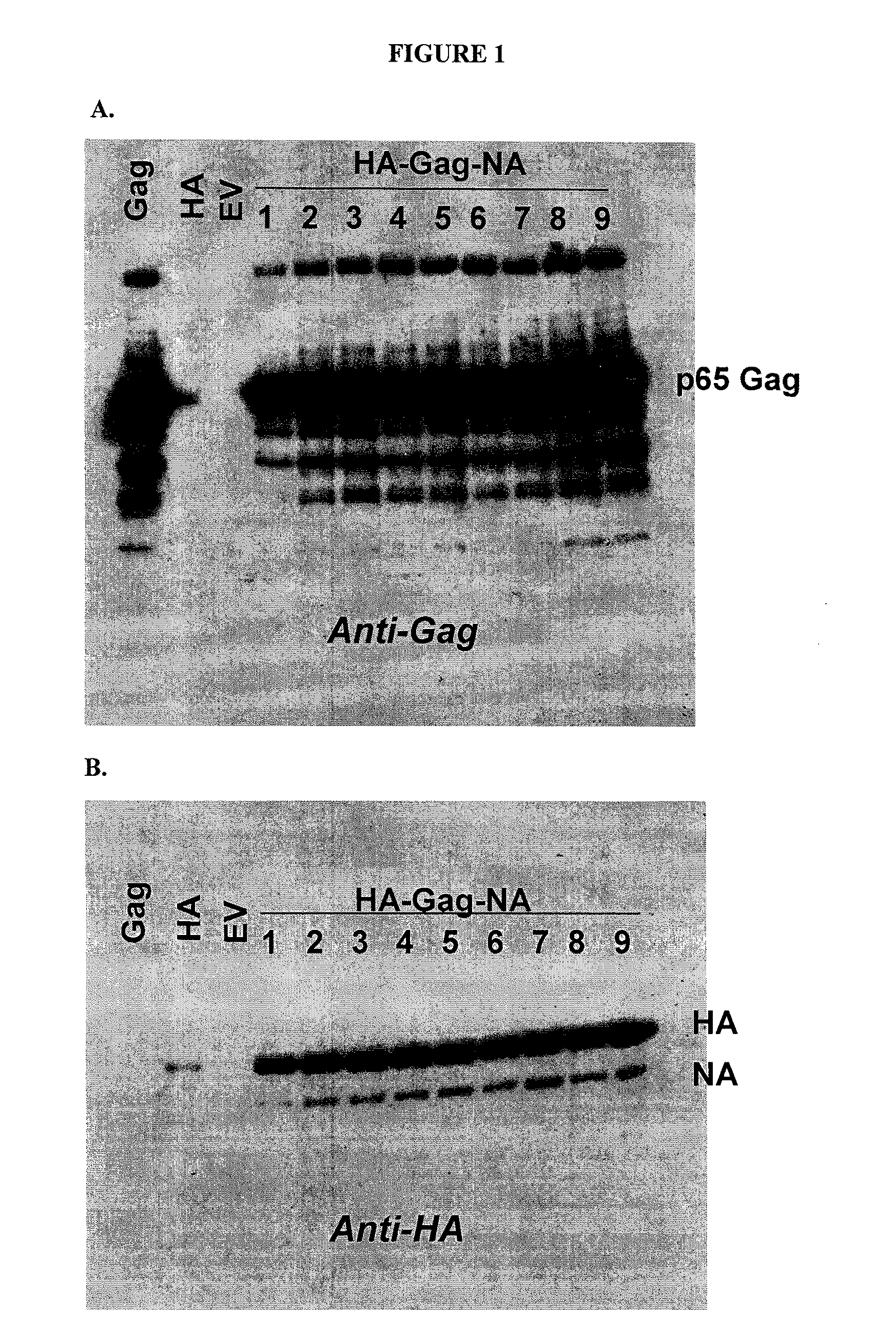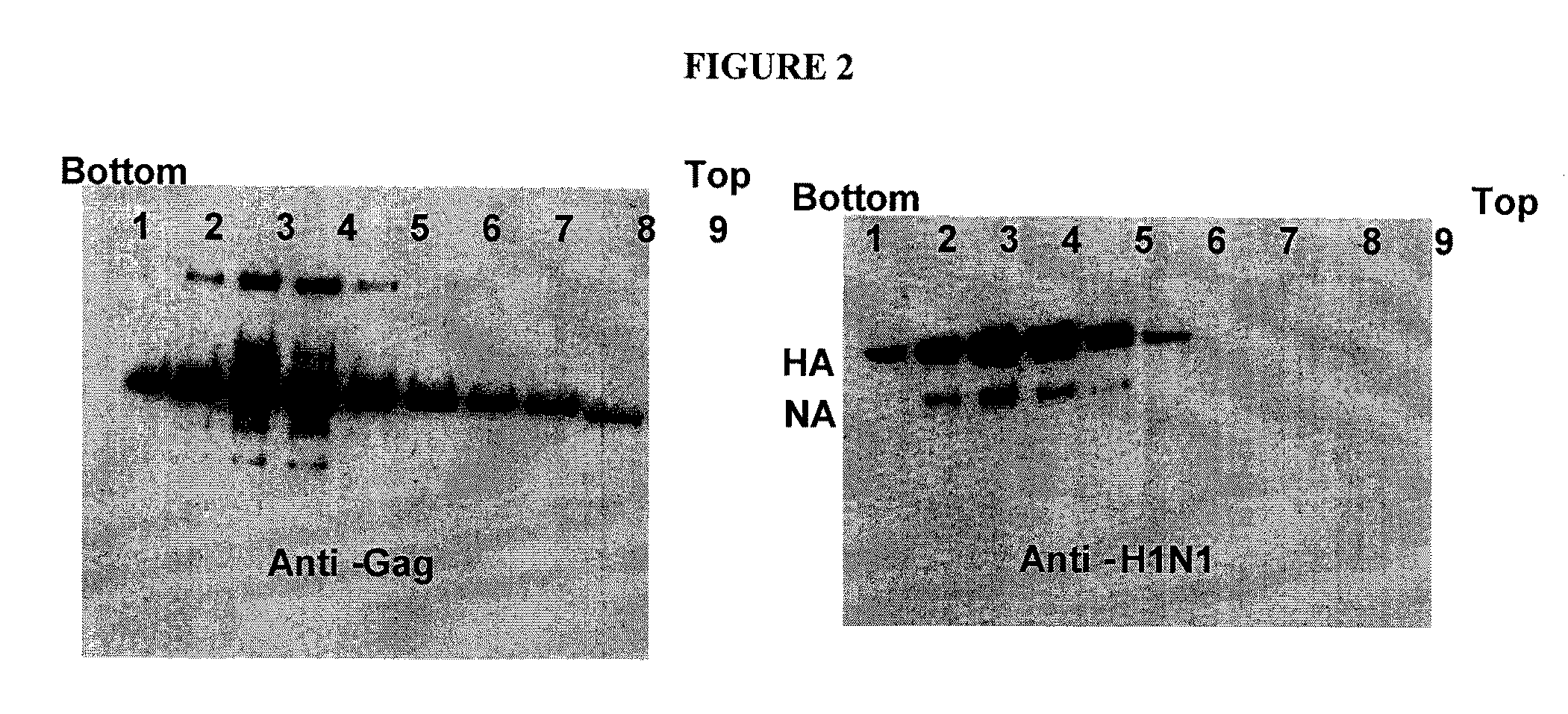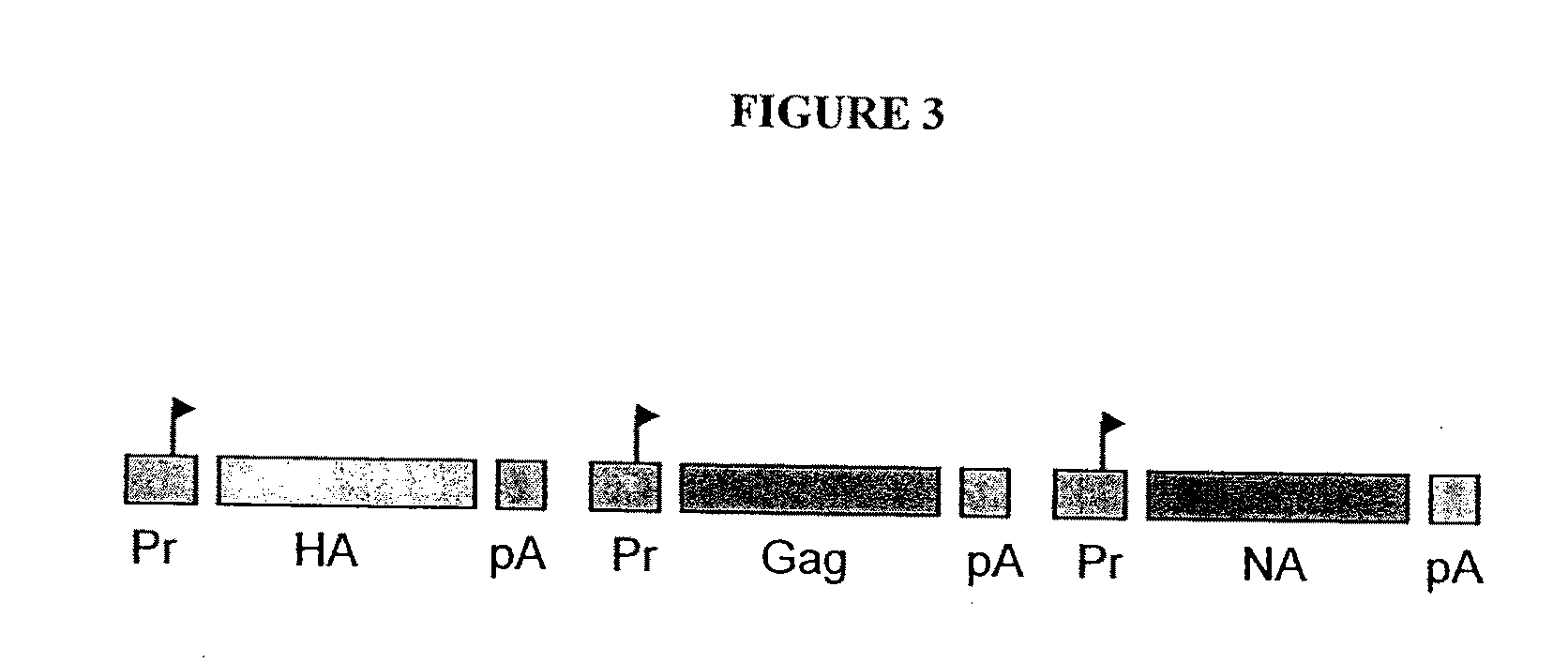Chimeric virus-like particles
a virus and virus technology, applied in the field of viruslike particles, can solve the problems of limited antigen range, limited method of vlp production, and limited development of enveloped-vlps as vaccines, and achieve the effect of industing a protective immunization respons
- Summary
- Abstract
- Description
- Claims
- Application Information
AI Technical Summary
Benefits of technology
Problems solved by technology
Method used
Image
Examples
example 1
Production of a Chimeric Influenza VLP
[0164]The MLV gag coding sequence was obtained by PCR from plasmid pAMS (ATCC) containing the entire Moloney murine leukemia virus amphotropic proviral sequence. The gag coding sequence was inserted into pFastBac1 (Invitrogen) behind the polyhedron promoter and the resulting plasmid was transformed into DH10Bac competent cells for recombination into the baculovirus genome. High molecular weight bacmid DNA was then purified and transfected into Sf9 cells for generation of a gag-expressing recombinant baculovirus. Two other recombinant baculoviruses encoding the hemagglutinin and neuraminidase, respectively, of A / PR / 8 / 34 (H1N1) were produced in a similar fashion after RT-PCR cloning of the HA and NA coding sequences from virus RNA. Finally, a single baculovirus vector encoding all three products (HA-gag-NA) was produced by combining the HA, gag, and NA expression units (polyhedron promoter—coding sequence—polyA site) from individual pFastBac1 plas...
example 2
Production, Characterization and Immunogenicity Testing of HA-gag-NA VLPs Containing an Anthrax PA Epitope Attached to HA
[0167]As described in Example 1, individual baculoviruses expressing MLV gag and the HA and NA products of A / PR / 8 / 34 have been produced. In addition a triple expression recombinant baculovirus encoding all three products has also been constructed and sucrose density gradient centrifugation of pelleted medium supernatants from infected insect cells showed coincident banding of gag and HA as detected by Western blotting indicating that VLPs with HA had formed. The arrangement of coding sequences in the triple expression vector is shown in FIG. 3 in which the HA, gag, and NA coding elements are arranged in a head-to-tail fashion, each with its own promoter (Pr) and polyadenylation sequence (pA). Combining all coding sequences into a single baculovirus avoids the need to perform co-infections with separate viruses and the associated difficulties of achieving consisten...
example 3
Production and Immunogenicity Testing of Enhanced VLPs
[0177]This Example 3 will demonstrate the enhancements of the VLPs for improved immunogenicity and protection by incorporation of the TLR5 agonist flagellin to boost the strength of adaptive immune responses to the anthrax PA epitope attached to NA.
[0178]Adjuvant Effects Due to Flagellin Incorporation:
[0179]The flagellin coding sequence was recently cloned from S. typimurium genomic DNA and inserted at the 3′ end of the gag coding sequence just 5′ to the termination codon. The flagellin coding sequence will also be inserted at the N-terminus of the A / PR / 8 / 34 HA coding sequence using a PstI site located at the boundary between the signal peptide and mature coding sequences. Insertions at this location in HA lead to proper expression of chimeric HA molecules with expected molecular weight increases as demonstrated by SDS PAGE. The NA polypeptide will have the 140 amino acid anthrax C-terminal PA domain fused to its C-terminus. The ...
PUM
| Property | Measurement | Unit |
|---|---|---|
| Immunogenicity | aaaaa | aaaaa |
| Covalent bond | aaaaa | aaaaa |
Abstract
Description
Claims
Application Information
 Login to View More
Login to View More - R&D
- Intellectual Property
- Life Sciences
- Materials
- Tech Scout
- Unparalleled Data Quality
- Higher Quality Content
- 60% Fewer Hallucinations
Browse by: Latest US Patents, China's latest patents, Technical Efficacy Thesaurus, Application Domain, Technology Topic, Popular Technical Reports.
© 2025 PatSnap. All rights reserved.Legal|Privacy policy|Modern Slavery Act Transparency Statement|Sitemap|About US| Contact US: help@patsnap.com



